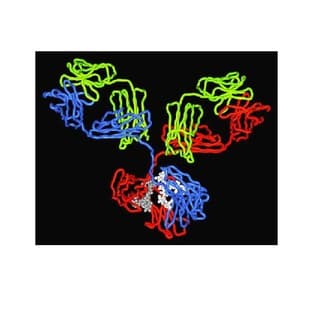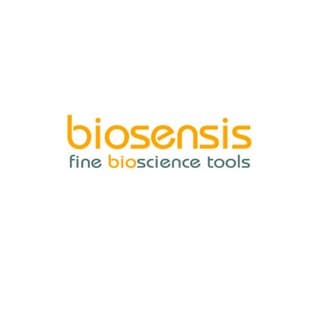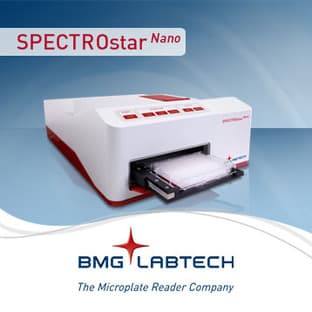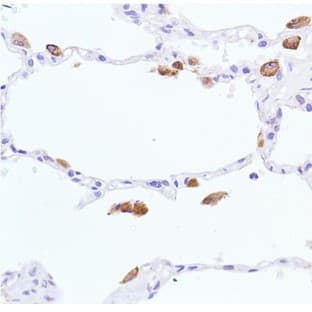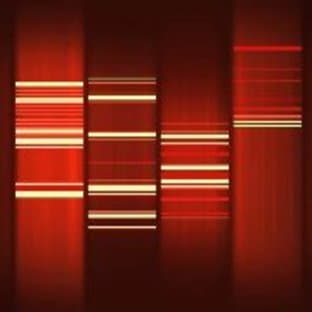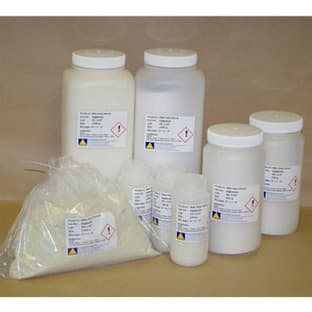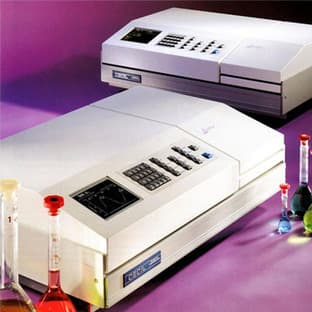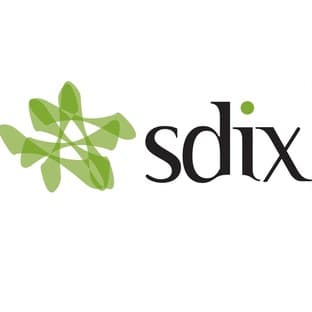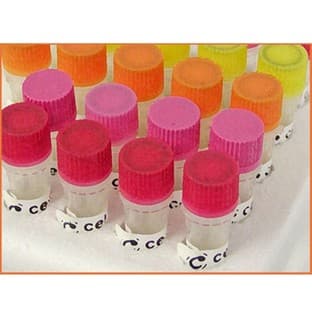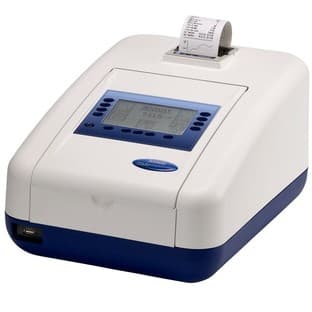
Supplier:
BOSTER IMMUNOLEADERCat no: PA1731
Polyclonal Anti-TGFBR1
Prices direct from BOSTER IMMUNOLEADER
Quick response times
Exclusive Biosave savings/discounts
SPECIFICATIONS
Price
200.00 USD
Catalog Number
PA1731
Size
100ug/vial
Applications
IHC, WB
Reactivities
Hum, Mouse, Rat
Form
Lyophilized
Format
Each vial contains 5mg BSA, 0.9mg NaCl, 0.2mg Na2HPO4, 0.05mg Thimerosal, 0.05mg NaN3.
Gene Id
TGFBR1
References
1.Drera, B., Tadini, G., Barlati, S., Colombi, M.Identification of a novel TGFBR1 mutation in a Loeys-Dietz syndrome type II patient with vascular Ehlers-Danlos syndrome phenotype. (Letter)Clin. Genet. 73: 290-293, 2008.\n2.Goudie, D. R., D'Alessandro, M., Merriman, B., Lee, H., Szeverenyi, I., Avery, S., O'Connor, B. D., Nelson, S. F., Coats, S. E., Stewart, A., Christie, L., Pichert, G., and 11 others.Multiple self-healing squamous epithelioma is caused by a disease-specific spectrum of mutations in TGFBR1.Nature Genet. 43: 365-369, 2011.\n3.Vellucci, V. F., Reiss, M.Cloning and genomic organization of the human transforming growth factor-beta type I receptor gene.Genomics 46: 278-283, 1997.\n
Swiss Prot
P36897
Storage Temp
At -20 degree C for one year. After reconstitution, at 4 degree C for one month. It can also be aliquotted and stored frozen at -20 degree C for a longer time.Avoid repeated freezing and thawing.
Additional Info
A synthetic peptide corresponding to a sequence in the middle region of human TGFBR1, identical to the related rat and mouse sequences.
Scientific Background
TGFBR1, Transforming growth factor, beta receptor I is a TGF beta receptor. TGFBR1 is its human gene. The protein encoded by this gene forms a heteromeric complex with type II TGF-beta receptors when bound to TGF-beta, transducing the TGF-beta signal from the cell surface to the cytoplasm. The encoded protein is a serine/threonine protein kinase. Mutations in this gene have been associated with Loeys-Dietz aortic aneurysm syndrome (LDAS). TGFB1 regulates cell cycle progression by a unique signaling mechanism that involves its binding to TGFBR2 and activation of TGFBR1. Both are transmembrane serine/threonine receptor kinases. The TGFBR1 receptor may be inactivated in many of the cases of human tumor cells refractory to TGFB-mediated cell cycle arrest. Vellucci and Reiss (1997) reported that the TGFBR1 gene is approximately 31 kb long and contains 9 exons. The organization of the segment of the gene that encodes the C-terminal portion of the serine/threonine kinase domain appears to be highly conserved among members of the gene family.
More from BOSTER IMMUNOLEADER
Applications
IHC, WB
Reactivities
Hum
Applications
IHC, WB
Reactivities
Mouse, Rat
Applications
ELISA, WB
Reactivities
Mouse
Applications
WB
Reactivities
Hum, Mouse, Rat
Applications
IHC, WB
Reactivities
Hum
Latest promotions
Spend less time on DNA cleanup so you can do more science. The MSB Spin PCRapace is the fastest way to purify your DNA from PCR, restriction digestion, and...
New brilliant antibodies, and new lower prices!For flow cytometry reagents in general, \"bright is better.\" The violet-excitable BD Horizon™ BV421 and...
As an incentive to qualify our BSA, we are offering a 20% discount when you purchase your first 100g, 500g or 1000g of any grade of Bovine Serum Albumin....
It is not every day that you are given something for nothing. We are giving away additional spectrophotometer software.Cecil Instruments have enhanced the...
We're so sure that you'll prefer Cayman Assay kits over your present brand that we're willing to give you a free assay kit to prove it!
10% Discount on 2 Rabbit Polyclonal Antibody Service. With over 20 years experience, SDIX has developed into the premier US custom antibody producer,...
For the past decade scientists have extensively used ATS secondary toxin conjugates to make their own targeted toxins for in vitro use.The ability to combine...
Did your supplier increase the price of Fetal Bovine Serum? Did they substitute the US Origin with USDA? Well say no more! Innovative Research is still...
Bulk Cytokines with Custom Vialing.20 - 50% off cytokines, growth factors, chemokines and more...For a limited time Cell Sciences is offering substantial...
Jenway’s 73 series spectrophotometer range provides four models with a narrow spectral bandwidth of 5nm and an absorbance range of –0.3 to 2.5A,...
Are you planning to have a customised antibody made for your research?Since 2000, Everest has been producing a catalog containing thousands of affinity...
Top suppliers
United States Biological
230753 products
Carl Zeiss Microscopy
27 products
Promega Corporation
11 products
Panasonic Healthcare Company
5 products
Life Technologies
1 products
Nikon Instruments Europe
11 products
Olympus Europa Holding GmbH
3 products
Leica Microsystems, Inc.
10 products
GE Healthcare Life Sciences
2 products
Tecan Trading AG
19 products
Beckman Coulter, Inc.
1 products
AB SCIEX
3 products
BD (Becton, Dickinson and Company)
1 products
RANDOX TOXICOLOGY
5 products
Randox Food Diagnostics
6 products



